Discover how Mexico’s vibrant Christmas decorations blend with its rich cultural heritage, creating a festive and welcoming atmosphere for everyone, especially the LGBTQ+ community, with insights from gaymexico.net.
Christmas in Mexico is a unique and vibrant experience, especially appealing to the LGBTQ+ community with its colorful decorations and warm traditions. At gaymexico.net, we guide you through these festive customs. We’ll explore how Mexicans decorate their homes and towns for the holidays, focusing on inclusivity and cultural richness. Get ready to dive into the magical world of Mexican Christmas celebrations, from farolitos to nacimientos, and discover how you can experience this joyous season safely and authentically. This holiday season, immerse yourself in Mexican Christmas traditions such as colorful decorations, festive parties, and exuberant atmospheres, all while enjoying LGBTQ+ friendly spaces.
1. Exploring the Heart of Mexican Christmas Decorations
Mexico embraces Christmas with a passion, transforming cities and homes into dazzling displays of color and tradition. The holiday season, locally known as Navidad, is a time of profound cultural significance and exuberant celebration. From early December, the country undergoes a festive metamorphosis, blending indigenous customs with Catholic traditions.
1.1. The Fusion of Traditions: A Unique Mexican Christmas
Mexico’s Christmas celebrations are a vibrant blend of indigenous culture and Catholic traditions, creating a unique and captivating holiday atmosphere.
The festive season begins on December 12 with the Feast of the Virgin of Guadalupe and extends until January 6, Día de los Reyes (Three Kings Day). This extended period is filled with religious observances, lively parties, and family gatherings. Decorations are a crucial part of this celebration, reflecting the country’s rich heritage and artistic flair.
1.2. Illuminating the Way: The Role of Farolitos
Farolitos, or luminarias, are traditional lanterns that light up Mexican Christmas celebrations, symbolizing guidance and warmth during the holiday season.
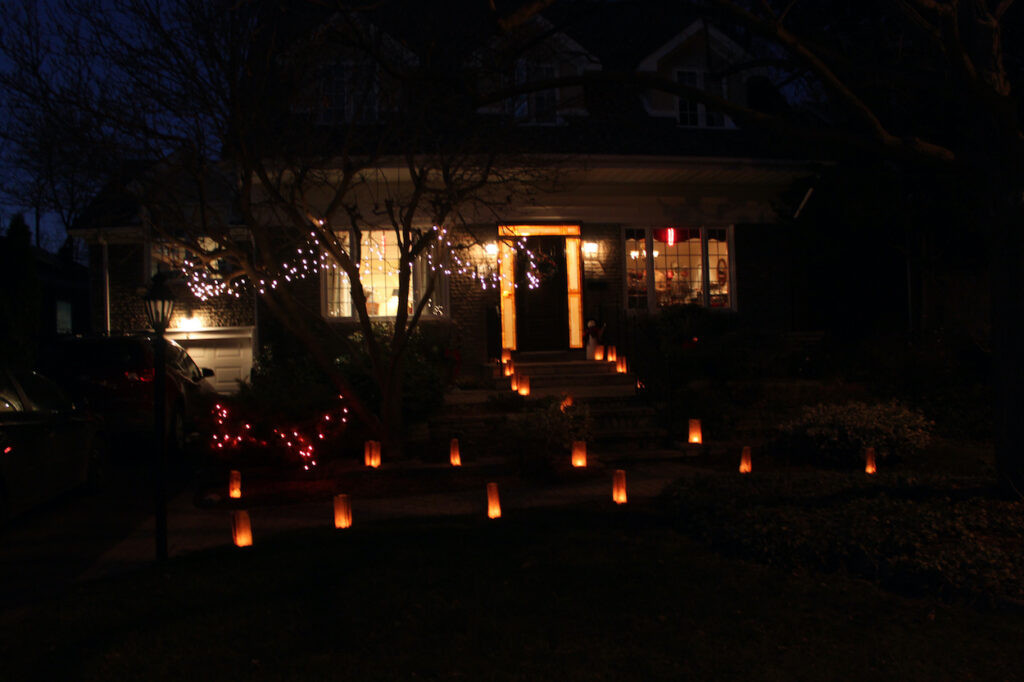 Farolitos lining a street in Mexico at Christmas
Farolitos lining a street in Mexico at Christmas
These paper lanterns are a common sight during the Christmas season, particularly in the southwestern United States and Mexico. Farolitos are typically made from brown paper bags filled with sand and illuminated by a candle. The soft glow of these lanterns creates a warm and inviting atmosphere, lining walkways, windowsills, and rooftops. According to religious mythology, these lanterns guided Mary and Joseph on their way to Bethlehem.
1.3. Nacimientos: Recreating the Nativity Scene
Nacimientos, or Nativity scenes, are a central part of Mexican Christmas decorations, depicting the birth of Jesus and the Holy Family.
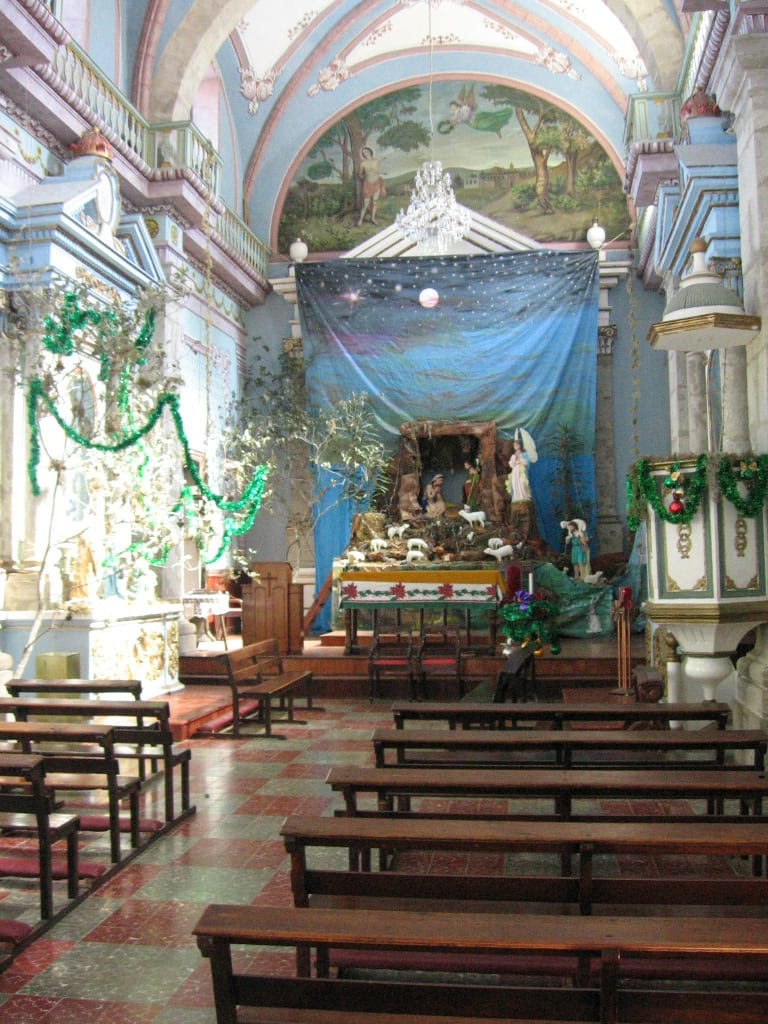 A beautifully crafted Nacimiento scene with clay figures
A beautifully crafted Nacimiento scene with clay figures
These elaborate displays often include the Holy Family, shepherds, angels, and animals, all carefully arranged to recreate the biblical scene. Families often add their personal touch to nacimientos, using moss, rocks, and flowers to decorate the manger. The figure of baby Jesus is traditionally added on Christmas Eve, symbolizing his birth.
1.4. A Riot of Color: Traditional Mexican Ornaments
Mexican Christmas ornaments explode with vibrant colors and unique materials, reflecting the country’s rich folk art traditions.
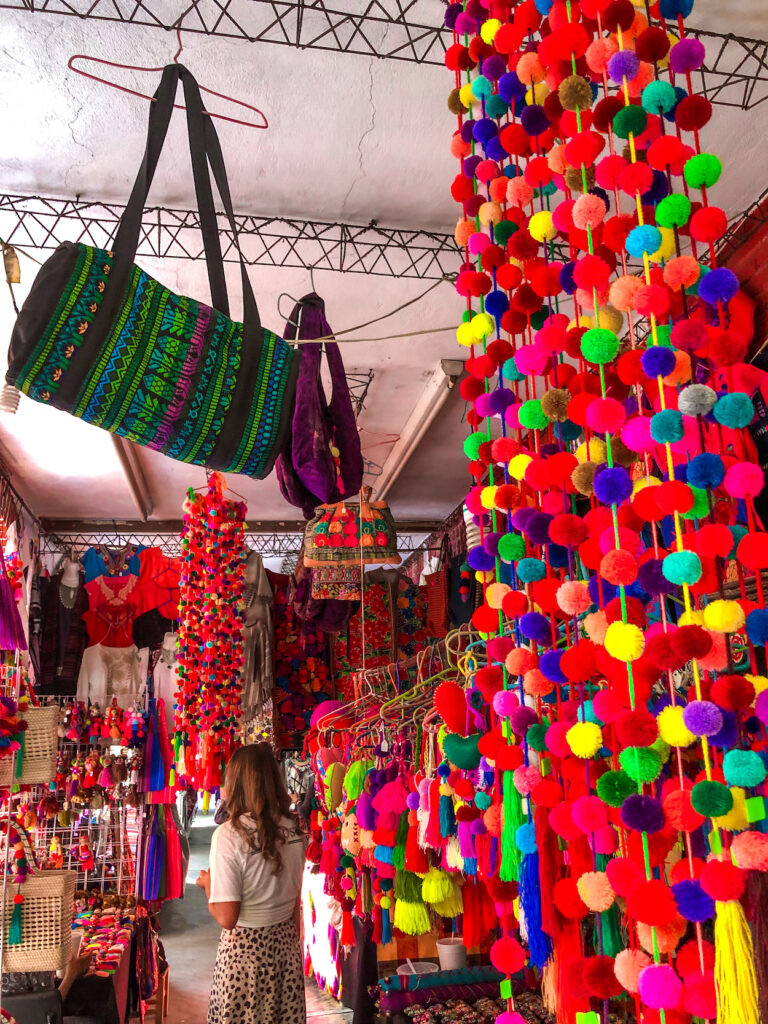 Colorful Mexican Christmas ornaments hanging on a tree
Colorful Mexican Christmas ornaments hanging on a tree
Unlike the mass-produced glass ornaments common in North America, Mexican ornaments are often handmade from cloth, tin, straw, clay, and other natural materials. Felt ornaments, hand-embroidered with intricate designs, are especially popular. These unique decorations add a touch of warmth and authenticity to any Christmas tree.
1.5. The Symbolism of Piñatas in Christmas Celebrations
Star-shaped piñatas hold a significant place in Mexican Christmas celebrations, representing the triumph over sin and the rewards of faith.
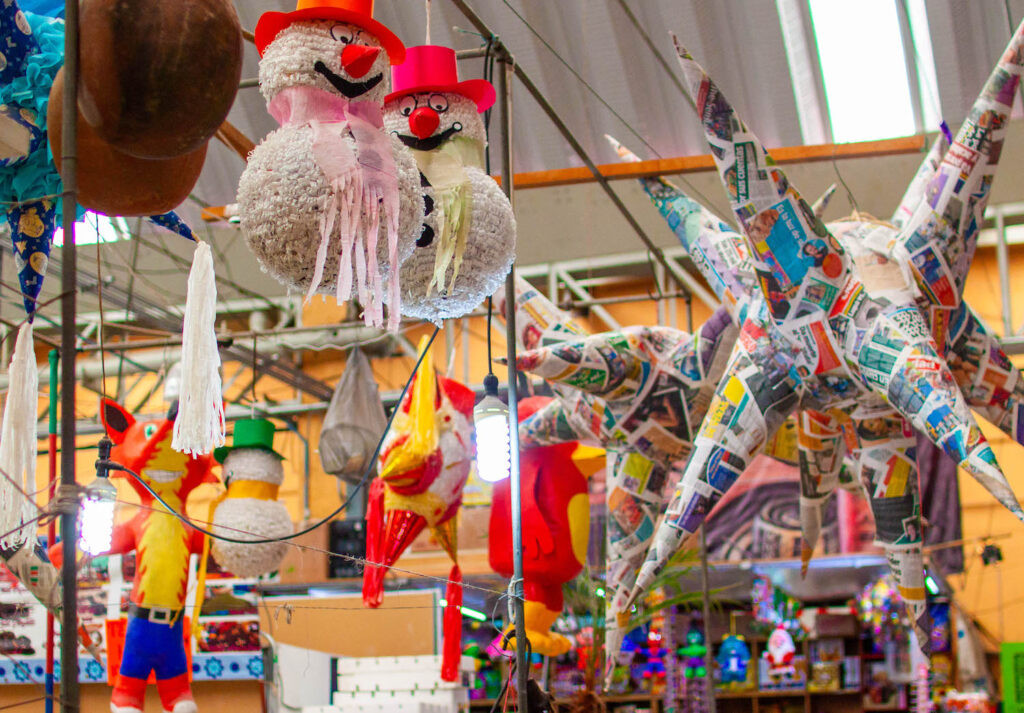 A colorful star-shaped piñata at a Las Posadas celebration
A colorful star-shaped piñata at a Las Posadas celebration
Traditionally, piñatas were designed with seven points, each symbolizing one of the seven deadly sins. The act of breaking the piñata represents the victory of good over evil, with the candies and treats inside symbolizing the rewards of faith. Piñatas are a central part of Las Posadas, a nine-day celebration leading up to Christmas.
1.6. Las Posadas: A Pilgrimage Re-enacted
Las Posadas is a nine-day celebration from December 16 to 24, re-enacting Mary and Joseph’s search for shelter in Bethlehem, filled with processions, songs, and festive gatherings.
Each night, family members and friends gather to re-enact Mary and Joseph’s journey, going from house to house seeking shelter. The celebration culminates in a festive party with food, music, and the breaking of a piñata.
1.7. The Poinsettia: Mexico’s Christmas Flower to the World
The poinsettia, a vibrant red flower native to Mexico, has become a global symbol of Christmas, adding a touch of Mexican flair to holiday decorations worldwide.
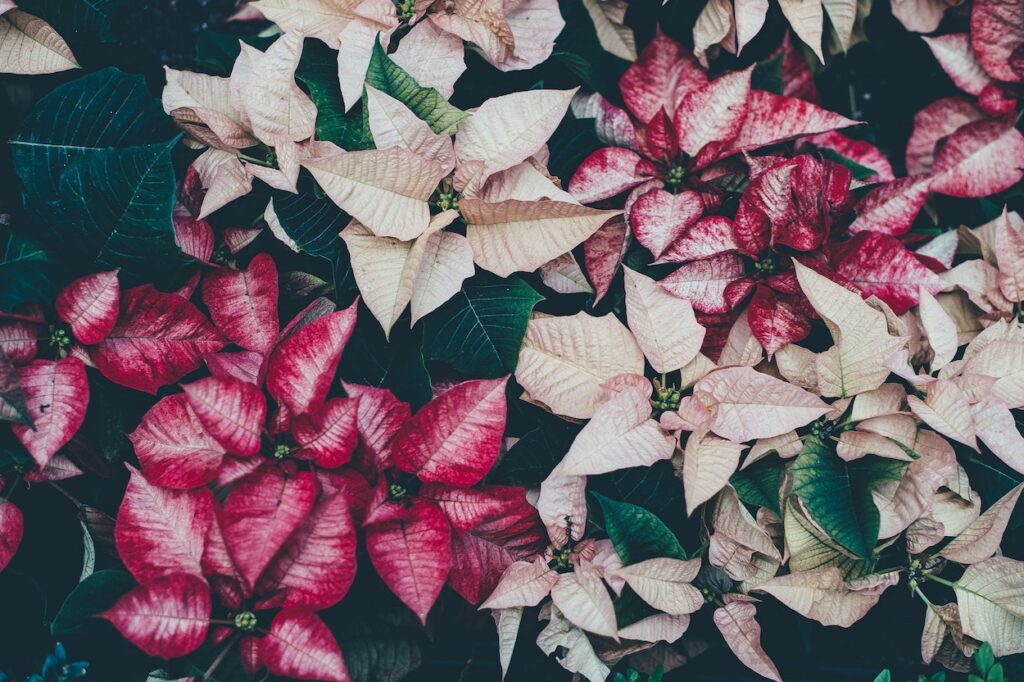 A vibrant poinsettia plant, also known as Noche Buena
A vibrant poinsettia plant, also known as Noche Buena
Known in Mexico as Noche Buena (Christmas Eve), the poinsettia was brought to the United States in the 19th century by Joel Roberts Poinsett, the U.S. ambassador to Mexico. The flower’s association with Christmas stems from a Mexican legend about a poor girl who offered a bouquet of weeds to the baby Jesus, which miraculously transformed into beautiful red flowers.
2. Culinary Traditions: Christmas Flavors of Mexico
No Christmas celebration is complete without delicious food and drinks, and Mexico offers a tempting array of culinary traditions to savor during the holiday season.
2.1. Mexican Hot Chocolate: A Taste of History
Mexican hot chocolate, a rich and spicy beverage with roots in Mayan culture, adds a unique and comforting touch to Christmas celebrations.
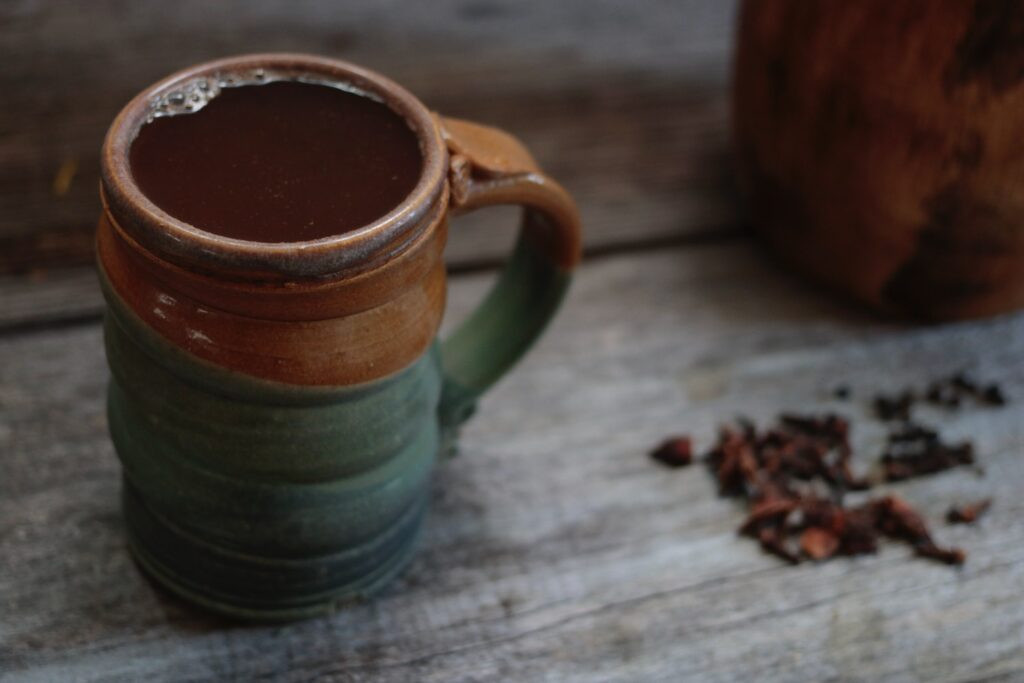 A steaming mug of traditional Mexican hot chocolate
A steaming mug of traditional Mexican hot chocolate
Unlike the sweet, milky hot chocolate common in North America, Mexican hot chocolate is often made with tablillas (chocolate tablets) infused with cinnamon, chili peppers, and vanilla. The drink is traditionally frothed using a molinillo, a wooden whisk that creates a rich and creamy texture.
2.2. Noche Buena: The Christmas Eve Feast
Noche Buena, or Christmas Eve, is celebrated with a lavish feast, bringing families together to share traditional dishes and create lasting memories.
Families gather to share a festive meal, featuring a variety of traditional dishes. Pozole, a hearty soup made with pork and hominy, is a popular choice. Other common dishes include tamales, enchiladas, and roast turkey.
2.3. Pozole: A Soup Steeped in Tradition
Pozole, a flavorful soup made with pork and hominy, is a staple of Mexican Christmas feasts, symbolizing community and culinary heritage.
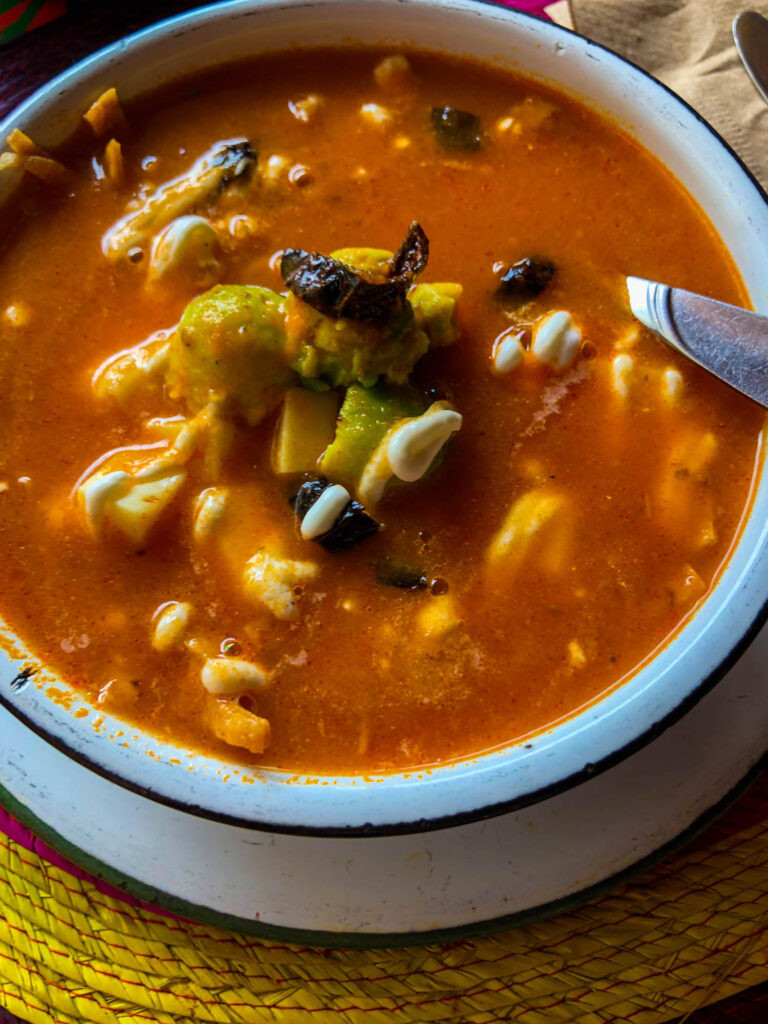 A bowl of red pozole topped with avocado and cilantro
A bowl of red pozole topped with avocado and cilantro
The key ingredient in pozole is hominy, dried corn kernels that have been treated with an alkaline solution in a process called nixtamalization. This process softens the kernels and enhances their nutritional value. Pozole is typically served with a variety of toppings, such as shredded cabbage, radishes, onions, and avocado.
2.4. Ponche: A Warm and Festive Punch
Ponche, a warm fruit punch simmered with spices, is a traditional Mexican Christmas beverage, filling homes with its comforting aroma and festive flavors.
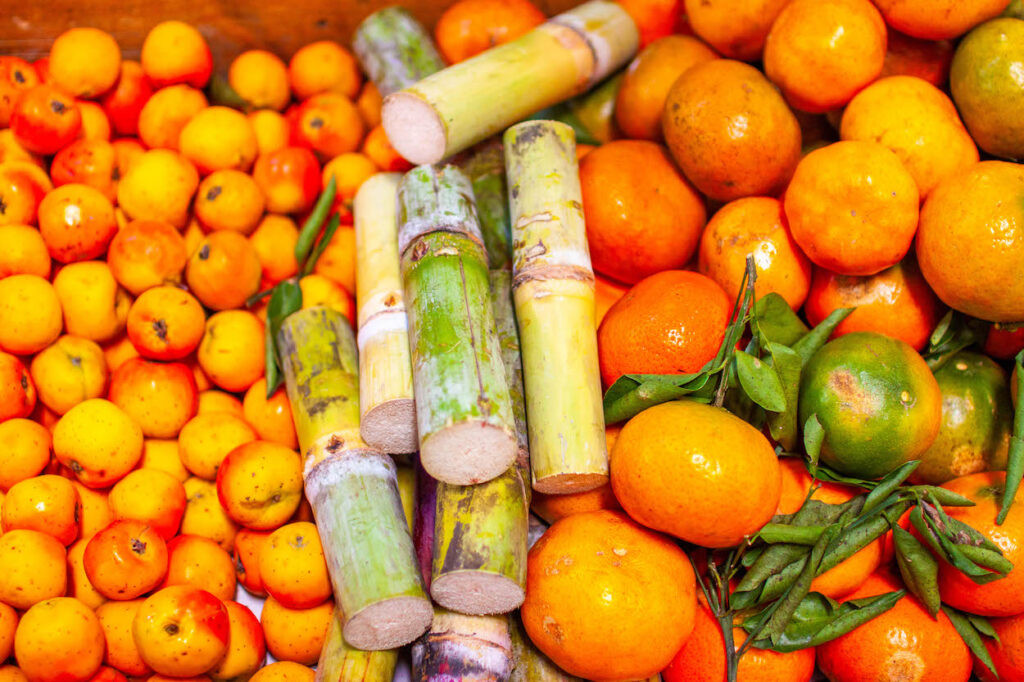 A simmering pot of ponche with various fruits and spices
A simmering pot of ponche with various fruits and spices
This warm and comforting beverage is made with a variety of fruits, such as apples, pears, oranges, and guavas, along with spices like cinnamon, cloves, and star anise. A unique ingredient in ponche is tejocotes, small yellow fruits that resemble crabapples. Sugar cane is added to sweeten the punch, and alcohol may be added for an adult version.
2.5. Rosca de Reyes: Celebrating the Three Kings
Rosca de Reyes, a traditional cake adorned with dried fruits, is eaten on Three Kings Day, commemorating the Wise Men’s visit to the baby Jesus.
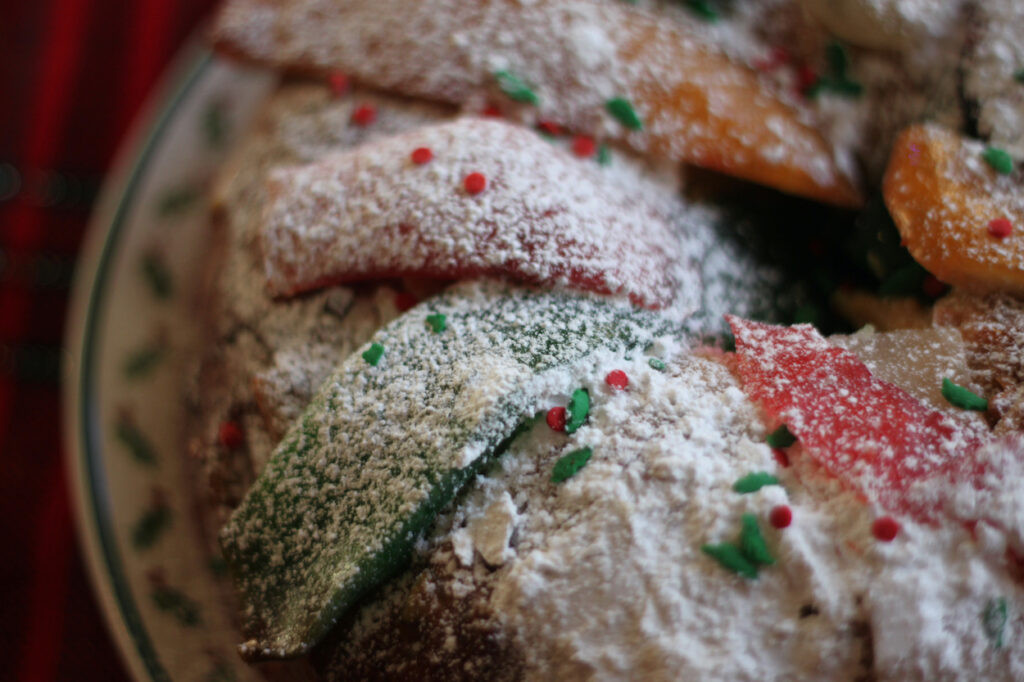 A colorful Rosca de Reyes cake decorated with dried fruits
A colorful Rosca de Reyes cake decorated with dried fruits
This ring-shaped cake is flavored with orange and decorated with colorful dried fruits, symbolizing the jewels in a king’s crown. Hidden inside the cake is a small plastic figure of the baby Jesus. Whoever finds the figure in their slice is responsible for hosting and providing tamales on Candelaria Day (February 2).
3. Experiencing Christmas in Mexico as an LGBTQ+ Traveler
Mexico offers a warm and welcoming environment for LGBTQ+ travelers, with many destinations embracing diversity and inclusivity during the Christmas season.
3.1. LGBTQ+ Friendly Destinations in Mexico
Mexico boasts several cities and towns that are known for their LGBTQ+ friendly atmosphere, offering a safe and welcoming environment for travelers during the Christmas season.
Puerto Vallarta, Mexico City, and Cancun are popular destinations with thriving LGBTQ+ communities, offering a variety of gay-friendly hotels, bars, and clubs. These cities also host LGBTQ+ events and festivals throughout the year.
3.2. Tips for Safe and Enjoyable Travel
While Mexico is generally welcoming to LGBTQ+ travelers, it’s always wise to take certain precautions to ensure a safe and enjoyable trip.
Researching LGBTQ+ friendly establishments and neighborhoods, being aware of local customs and laws, and avoiding public displays of affection in more conservative areas are all helpful tips. Additionally, it’s always a good idea to have emergency contacts and resources readily available.
3.3. Connecting with the LGBTQ+ Community in Mexico
Connecting with the local LGBTQ+ community can enrich your travel experience, providing opportunities for cultural exchange and creating lasting friendships.
Attending LGBTQ+ events, visiting gay bars and clubs, and joining online communities are great ways to meet locals and learn more about LGBTQ+ life in Mexico.
3.4. Resources for LGBTQ+ Travelers
Several organizations and websites provide valuable resources for LGBTQ+ travelers planning a trip to Mexico.
Gaymexico.net offers comprehensive travel guides, event listings, and community resources for LGBTQ+ individuals visiting Mexico. Other helpful resources include the International Gay and Lesbian Travel Association (IGLTA) and local LGBTQ+ organizations.
4. Celebrating Christmas with a Mexican Twist: Ideas for Your Home
Even if you can’t travel to Mexico this Christmas, you can still incorporate Mexican traditions into your holiday celebrations, creating a festive and unique atmosphere in your own home.
4.1. DIY Farolitos: A Simple and Charming Decoration
Making your own farolitos is a fun and easy way to add a touch of Mexican charm to your Christmas decorations.
Simply decorate paper bags, fill them with sand, and place a candle inside, you can create a warm and inviting glow in your home.
4.2. Creating Your Own Nacimiento: A Meaningful Display
Creating your own nacimiento is a meaningful way to celebrate the birth of Jesus and add a personal touch to your Christmas decorations.
You can purchase a nacimiento set or create your own using clay figures, moss, rocks, and other natural materials.
4.3. Adding Mexican Ornaments to Your Tree: A Pop of Color
Adding Mexican ornaments to your Christmas tree is a great way to infuse your holiday decor with vibrant colors and unique designs.
You can find Mexican ornaments online or at specialty stores, or you can even make your own using felt, tin, or other craft materials.
4.4. Hosting a Las Posadas Party: A Festive Gathering
Hosting a Las Posadas party is a fun and festive way to celebrate the Christmas season with friends and family.
You can re-enact Mary and Joseph’s journey, sing traditional songs, and enjoy delicious Mexican food and drinks.
4.5. Serving Mexican Hot Chocolate: A Warm Treat
Serving Mexican hot chocolate is a delicious and comforting way to warm up your guests during the Christmas season.
You can use tablillas or cocoa powder and add spices like cinnamon, chili peppers, and vanilla.
5. The Enduring Magic of Mexican Christmas Traditions
Mexican Christmas traditions offer a unique and captivating blend of culture, religion, and celebration, providing a warm and welcoming experience for all.
5.1. A Time for Family and Community
Christmas in Mexico is a time for family and community, bringing people together to share traditions, celebrate faith, and create lasting memories.
5.2. A Celebration of Culture and Heritage
The decorations, food, and customs associated with Mexican Christmas reflect the country’s rich cultural heritage, blending indigenous traditions with Catholic beliefs.
5.3. A Warm Welcome for All
Mexico’s inclusive spirit extends to the LGBTQ+ community, with many destinations offering a safe and welcoming environment for travelers during the Christmas season.
5.4. Discover More at Gaymexico.net
To discover more about LGBTQ+ travel in Mexico, including detailed guides, event listings, and community resources, visit gaymexico.net.
Find comprehensive travel guides, event listings, and community resources to help you plan your perfect LGBTQ+ getaway. You can connect with the local LGBTQ+ community, discover hidden gems, and experience the best of Mexico’s vibrant culture.
Address: 3255 Wilshire Blvd, Los Angeles, CA 90010, United States
Phone: +1 (213) 380-2177
Website: gaymexico.net
FAQ: Unveiling the Secrets of Mexican Christmas Decorations
5.1. What are farolitos and what do they symbolize?
Farolitos, also known as luminarias, are paper lanterns that line streets and windowsills during Christmas in Mexico, symbolizing guidance and warmth, and echoing the story of Mary and Joseph’s search for shelter.
5.2. What is the significance of nacimientos in Mexican Christmas celebrations?
Nacimientos are Nativity scenes that depict the birth of Jesus, a central part of Mexican Christmas decorations, showcasing the Holy Family, shepherds, and animals in a detailed and artistic display.
5.3. How do Mexican Christmas ornaments differ from those in North America?
Mexican Christmas ornaments are known for their vibrant colors and unique materials like cloth, tin, and straw, differing from the mass-produced glass ornaments common in North America by showcasing folk art traditions.
5.4. What is the role of piñatas in Mexican Christmas festivities?
Star-shaped piñatas in Mexico originally symbolized the seven deadly sins, with the act of breaking them representing the triumph over sin and the rewards of faith, particularly during Las Posadas celebrations.
5.5. What is Las Posadas and when does it take place?
Las Posadas is a nine-day celebration from December 16 to 24, re-enacting Mary and Joseph’s search for shelter, involving processions, songs, and festive gatherings each night.
5.6. What is the origin of the poinsettia and its connection to Christmas?
The poinsettia, known in Mexico as Noche Buena, is a native Mexican plant that became a global symbol of Christmas after being brought to the U.S. in the 19th century, linked to a legend of a poor girl’s miraculous gift to the baby Jesus.
5.7. What is Mexican hot chocolate and how is it traditionally made?
Mexican hot chocolate is a rich and spicy beverage made with tablillas infused with cinnamon, chili peppers, and vanilla, traditionally frothed using a molinillo for a creamy texture, offering a unique twist on the classic drink.
5.8. What is Noche Buena and what kind of food is typically served?
Noche Buena is the Christmas Eve feast in Mexico, featuring traditional dishes like pozole (a hearty soup with pork and hominy), tamales, enchiladas, and roast turkey, bringing families together to share a festive meal.
5.9. What is Rosca de Reyes and when is it eaten?
Rosca de Reyes is a traditional cake eaten on Three Kings Day, adorned with dried fruits and a hidden figure of baby Jesus, symbolizing the Wise Men’s visit and carrying the tradition that whoever finds the figure must host Candelaria Day.
5.10. Are there LGBTQ+ friendly destinations in Mexico during Christmas?
Yes, destinations like Puerto Vallarta, Mexico City, and Cancun are known for their LGBTQ+ friendly atmosphere during Christmas, offering safe and welcoming environments with gay-friendly hotels, bars, and events.
